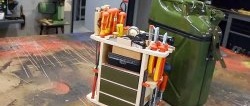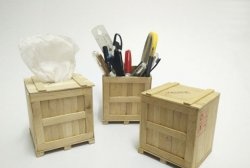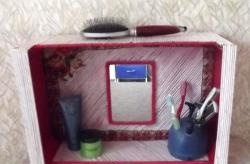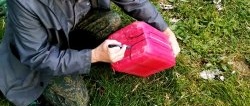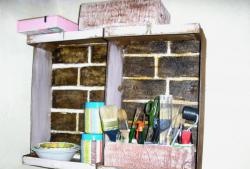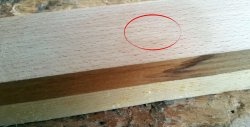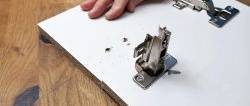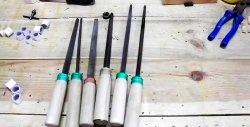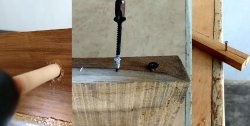How to make a box with your own hands
It is more convenient to root several dozen cuttings in a portable container - in the spring the soil in it warms up faster than in a cold greenhouse, and in the fall the seedlings are easily moved to their wintering site. Making a box with your own hands is not difficult: it will take little time, and suitable scraps of lumber can be found in every household.
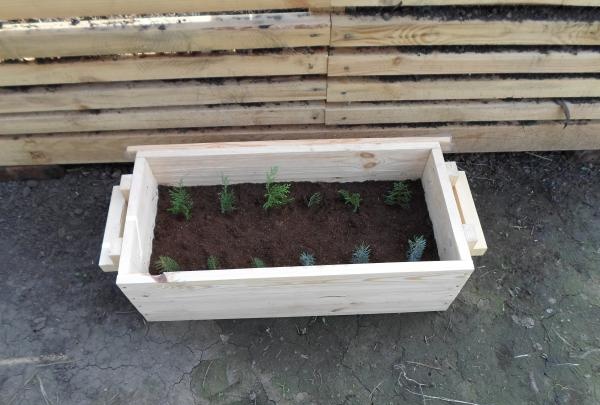
There should be enough space in the wooden box for normal growth of cuttings for 4–6 months before autumn transplantation or even 1–2 years, if this is required by rooting agricultural technology. Optimal box dimensions: 300x350x750 mm (height/width/length). In a shallower container, the lid will interfere with the shoots, and an excessively bulky structure will be more difficult to move.
Preparing for work
To build a homemade box you will need the following tools:
– hand saw,
- plane,
- hammer,
– drill,
– wood drills,
– furniture stapler,
- knife,
– roulette,
– square,
- pencil,
– brush.
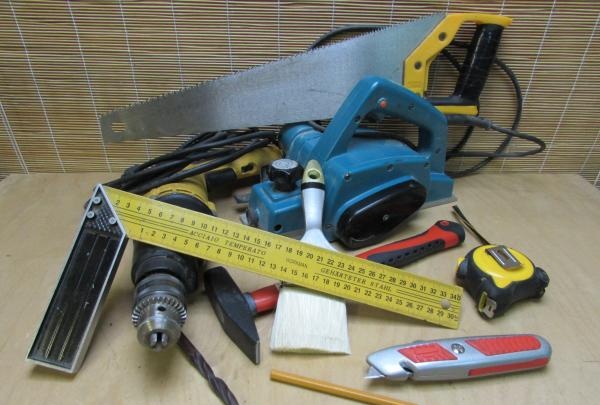
Pine wood without signs of decay is suitable for work:
1. Boards 16–25 mm thick.
2. Bars with a cross section of 30x50 mm.
3. Thin slats 10x30 mm.
When sorting through boards, discard warped and twisted ones - with high humidity they will become even worse.
Consumables:
1. Nails 50x2.5 – 28 pcs.
2. Nails 60x3.0 – 20 pcs.
3. Decorative furniture carnations – 10 pcs.
4. Antiseptic.
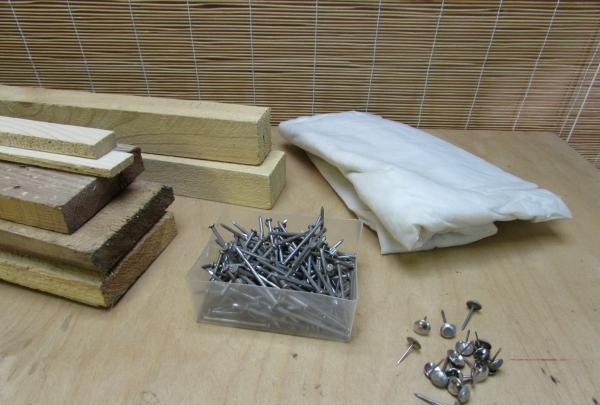
The lid of a homemade box can be a piece of plastic film or white non-woven material measuring 80x60 cm.
Manufacturing of parts
Drawing of the elements of a box for cuttings
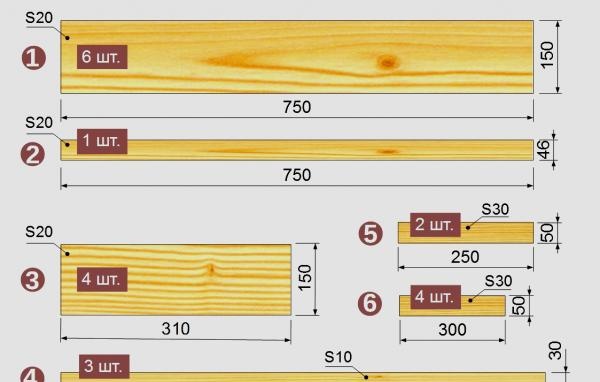
Wooden parts: 1 – longitudinal strips for the sides and bottom; 2 – bottom insert; 3 – strips for end walls; 4 – slats; 5 – handles; 6 – connecting bars.
Using a pencil, square and tape measure, mark the pieces according to the drawings, cutting off any cracked or chipped ends.
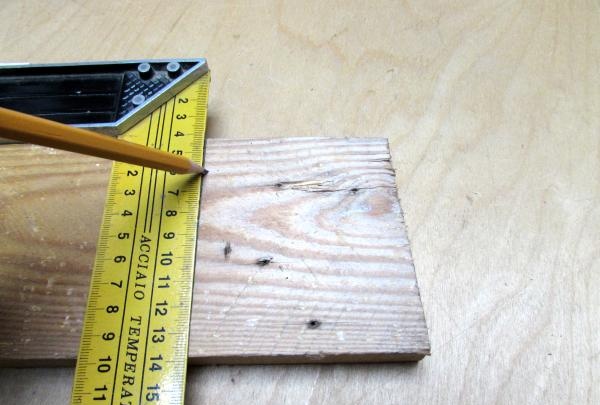
Cut the boards to size and smooth the surfaces with a planer. Coat the parts with 2-3 layers of protective impregnation, following the instructions on the package.
DIY box assembly
Fold two short planks into a shield, draw a line parallel to it at a distance of 30 mm from the cut. Repeat the marking on the opposite side. Place connecting blocks along the lines. Knock down the parts with nails and bend the protruding ends on the back side.
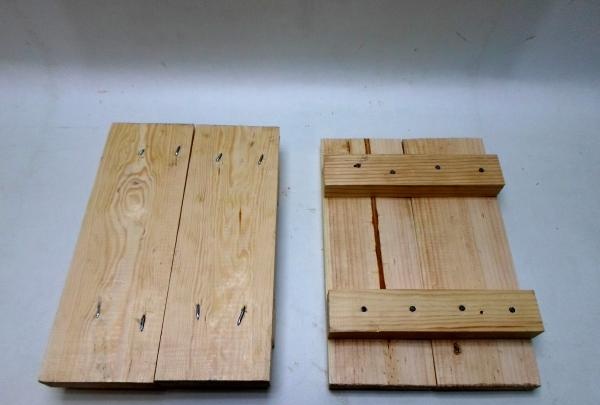
Take two longitudinal strips and “bait” carnations along the edges. Assemble the blanks in a “P” shape, trim the ends and hammer in nails.
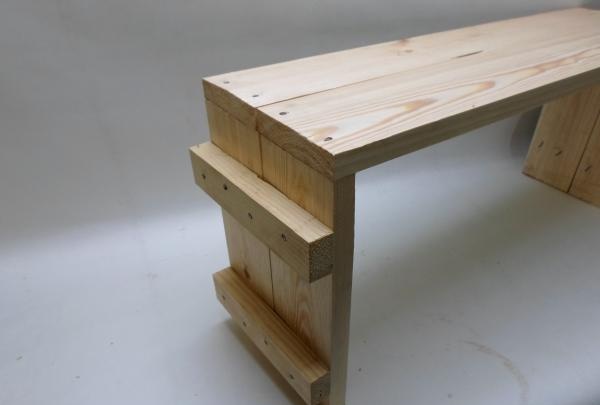
Turn the structure over and secure the side strips on the opposite side. Try to drive the nails vertically to avoid the point coming out of the wood.
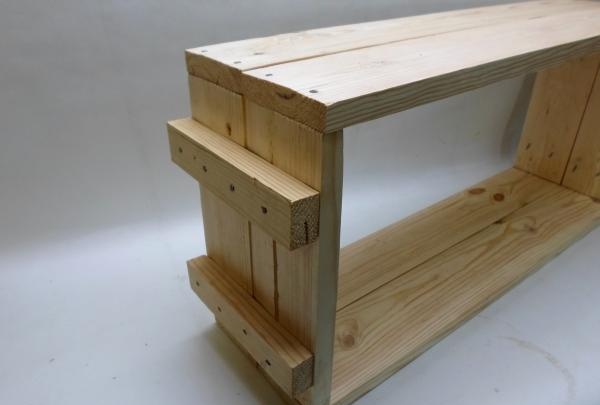
Nail the bottom parts by placing a narrow strip in the middle and leaving 2-3 mm gaps between the planks to allow the wooden elements to expand when swelling. Attach the handles with nails near the top of the box.
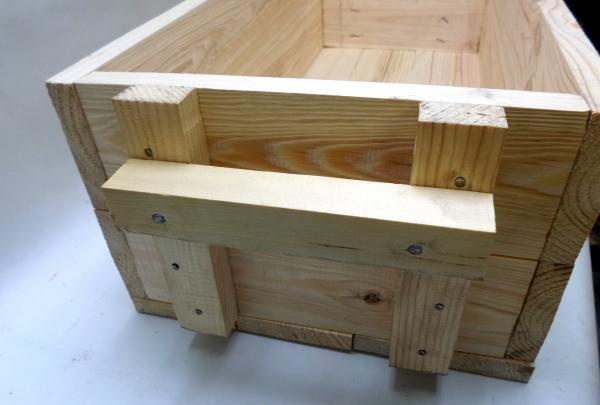
Drill two rows of drainage holes in the bottom of the box.
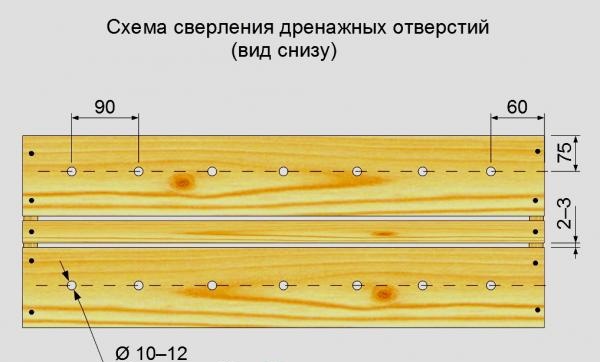
Make a makeshift lid for the box.Wrap one strip with film and secure the material with staples.
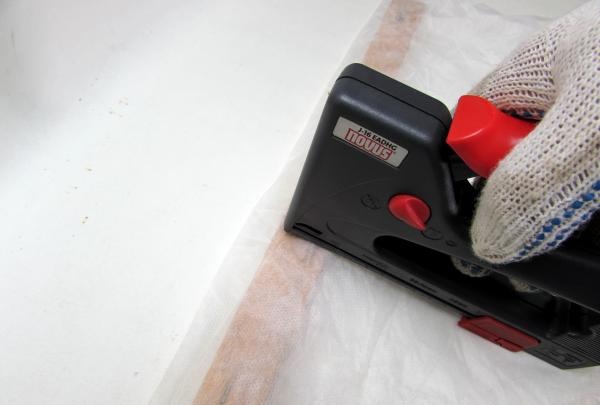
Wrap the second strip with the opposite edge of polyethylene, place the third strip on the lapel and nail it with small nails.
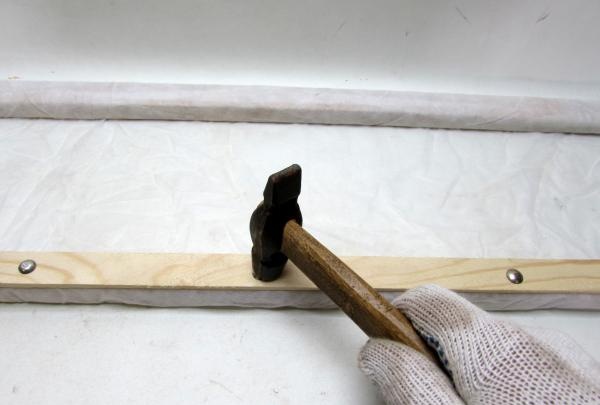
Attach the canvas to the wall of the box at three points, after drilling guide holes in the slats to prevent splitting of thin wood.
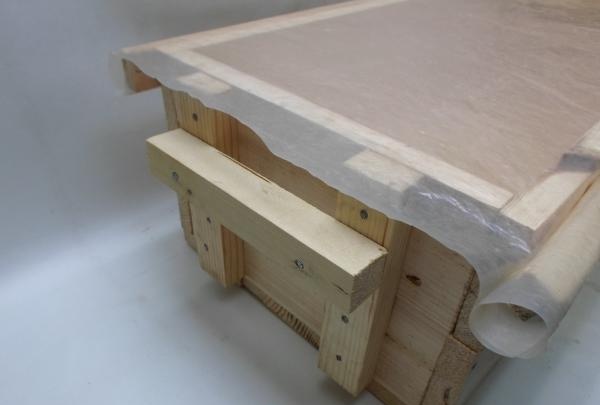
When using polyethylene, use a knife to make slits for water to drain, otherwise in heavy rain the film will bend and crush the shoots.
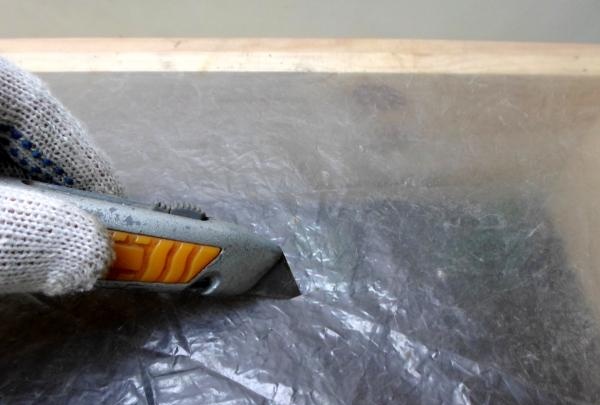
Fill the box you made with your own hands with fertile soil and plant the prepared cuttings.
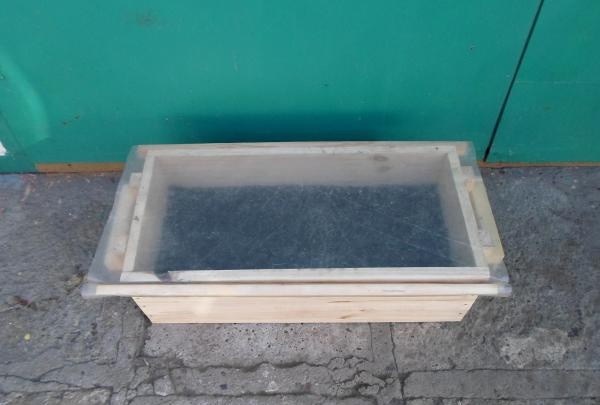
When placing the container on the surface of the soil, place bricks underneath. After selecting the seedlings for the “school”, free the box from the soil, clean the walls and dry the wood.

There should be enough space in the wooden box for normal growth of cuttings for 4–6 months before autumn transplantation or even 1–2 years, if this is required by rooting agricultural technology. Optimal box dimensions: 300x350x750 mm (height/width/length). In a shallower container, the lid will interfere with the shoots, and an excessively bulky structure will be more difficult to move.
Preparing for work
To build a homemade box you will need the following tools:
– hand saw,
- plane,
- hammer,
– drill,
– wood drills,
– furniture stapler,
- knife,
– roulette,
– square,
- pencil,
– brush.

Pine wood without signs of decay is suitable for work:
1. Boards 16–25 mm thick.
2. Bars with a cross section of 30x50 mm.
3. Thin slats 10x30 mm.
When sorting through boards, discard warped and twisted ones - with high humidity they will become even worse.
Consumables:
1. Nails 50x2.5 – 28 pcs.
2. Nails 60x3.0 – 20 pcs.
3. Decorative furniture carnations – 10 pcs.
4. Antiseptic.

The lid of a homemade box can be a piece of plastic film or white non-woven material measuring 80x60 cm.
Manufacturing of parts
Drawing of the elements of a box for cuttings

Wooden parts: 1 – longitudinal strips for the sides and bottom; 2 – bottom insert; 3 – strips for end walls; 4 – slats; 5 – handles; 6 – connecting bars.
Using a pencil, square and tape measure, mark the pieces according to the drawings, cutting off any cracked or chipped ends.

Cut the boards to size and smooth the surfaces with a planer. Coat the parts with 2-3 layers of protective impregnation, following the instructions on the package.
DIY box assembly
Fold two short planks into a shield, draw a line parallel to it at a distance of 30 mm from the cut. Repeat the marking on the opposite side. Place connecting blocks along the lines. Knock down the parts with nails and bend the protruding ends on the back side.

Take two longitudinal strips and “bait” carnations along the edges. Assemble the blanks in a “P” shape, trim the ends and hammer in nails.

Turn the structure over and secure the side strips on the opposite side. Try to drive the nails vertically to avoid the point coming out of the wood.

Nail the bottom parts by placing a narrow strip in the middle and leaving 2-3 mm gaps between the planks to allow the wooden elements to expand when swelling. Attach the handles with nails near the top of the box.

Drill two rows of drainage holes in the bottom of the box.

Make a makeshift lid for the box.Wrap one strip with film and secure the material with staples.

Wrap the second strip with the opposite edge of polyethylene, place the third strip on the lapel and nail it with small nails.

Attach the canvas to the wall of the box at three points, after drilling guide holes in the slats to prevent splitting of thin wood.

When using polyethylene, use a knife to make slits for water to drain, otherwise in heavy rain the film will bend and crush the shoots.

Fill the box you made with your own hands with fertile soil and plant the prepared cuttings.

When placing the container on the surface of the soil, place bricks underneath. After selecting the seedlings for the “school”, free the box from the soil, clean the walls and dry the wood.
Similar master classes
Particularly interesting
Comments (0)

